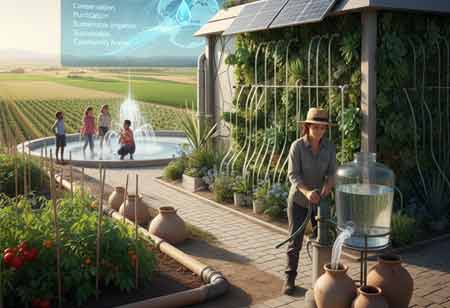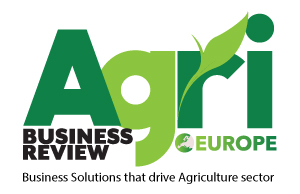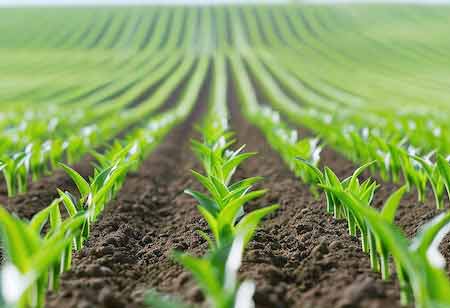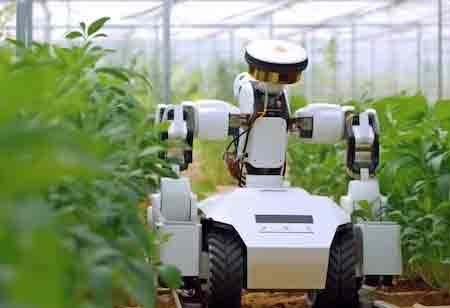Thank you for Subscribing to Agri Business Review Weekly Brief
Water Stress Solutions as Strategic Assets in European Agri-Business
Water management is gaining prominence in Europe’s sustainability efforts, emphasising intelligent optimisation and digital technologies to enhance efficiency and achieve circular water usage in processing plants.

By
Agri Business Review | Friday, November 21, 2025
Stay ahead of the industry with exclusive feature stories on the top companies, expert insights and the latest news delivered straight to your inbox. Subscribe today.
While energy efficiency and carbon neutrality have long dominated the sustainability conversation, water management has ascended to equal prominence. Across Europe—where drought-prone Mediterranean basins contrast sharply with the water-abundant Nordic plains—the operational paradigm for processing plants is shifting. This evolution is driven not merely by alignment with EU directives such as the Water Framework Directive and the Industrial Emissions Directive, but by a growing recognition that true operational resilience relies on hydric autonomy. Today, best practices define water-stress reduction not through restriction, but through intelligent optimisation, digital monitoring, circular-water strategies, and systemic redesign aligned with Europe’s broader Green Deal objectives.
Implementing Circular Water Hierarchies and Cascading Systems
The most significant transformation occurring in modern processing facilities is the strategic shift away from single-use water in non-critical operations. Leading manufacturers are redesigning plant layouts to implement water cascading, a structured approach that aligns water quality with the hygiene requirements of each process step. Using this graded methodology, the same volume of water can serve multiple purposes before treatment.
In a cascading system, potable water is strictly allocated to product-contact activities or ingredient preparation. Once utilised, this water becomes “process water” and is redirected to operations that require a lower level of purity. For instance, water used for final vegetable rinsing can be repurposed for initial washing of raw, soil-covered root crops. After additional filtration, the same water may be used for fluming or for cleaning floors in non-sterile areas, maximising resource efficiency.
Clean-in-Place (CIP) systems represent another central area of optimisation, particularly in dairy, brewing, and beverage processing. Traditional fixed-time cleaning cycles are being replaced by sensor-driven validation techniques that measure parameters such as conductivity and turbidity to determine precisely when equipment is clean. This transition often results in substantial reductions in water consumption. Facilities are also adopting burst-rinsing technologies that use short, high-pressure pulses instead of continuous flow to achieve effective mechanical cleaning with significantly less water. In parallel, final rinse water is increasingly recovered and reused as pre-rinse water for the next cleaning cycle, creating a closed-loop sanitation process that reinforces both sustainability and operational efficiency.
The Digitalization of Hydrology: Smart Metering and AI
Modern European processing plants are rapidly evolving into fully digital ecosystems where water use is measured with precision comparable to financial data. IoT-enabled sensors, AI-driven analytics, and granular sub-metering now provide real-time visibility across production lines, individual machines, and even operational shifts. This level of detail enables facilities to establish accurate baselines, detect anomalies instantly, and address issues such as leaks or declining efficiency before they escalate. Digital twins further enhance this capability by simulating production scenarios, optimising batch sequencing, and reducing water demand associated with cleaning cycles, particularly in operations handling both allergen- and non-allergen products.
These digital advancements also strengthen predictive maintenance practices. Acoustic sensors, flow analysers, and AI models identify early signs of infrastructure wear—such as pump inefficiencies or micro-leaks—weeks before failure. By proactively maintaining equipment at optimal performance, facilities not only strengthen operational reliability but also prevent the significant water losses traditionally driven by undetected or catastrophic system failures.
Advanced Treatment Technologies for Total Recovery
The next significant advancement in mitigating water stress lies in achieving complete water recovery, transforming wastewater treatment from a compliance activity into a strategic resource-management capability. The objective is not only to meet discharge regulations but to process wastewater to a quality that enables its seamless reintegration into production cycles, effectively creating a closed-loop system.
Membrane bioreactors (MBR) are increasingly supplementing conventional biological treatment, combining biological degradation with membrane filtration to generate high-quality effluent free of suspended solids and bacteria. When this effluent is subsequently treated through reverse osmosis (RO)—a pressure-driven separation process that removes dissolved salts and impurities—the resulting water often surpasses the quality of municipal supplies. Such reclaimed water is well-suited for use in boilers and cooling towers, and, subject to regulatory guidelines, can be directly incorporated into industrial processes.
In regions facing acute water scarcity, Zero Liquid Discharge (ZLD) systems represent the most advanced approach to water stewardship. These systems process wastewater until the only outputs are purified water, which is returned to the facility, and solid residues that can often be repurposed as valuable by-products. ZLD relies on thermal evaporation and crystallisation technologies, and while these technologies are traditionally energy-intensive, improvements in mechanical vapour recompression have significantly enhanced their economic feasibility. By utilising ZLD, facilities become largely independent of external water sources, enabling production growth that is no longer constrained by water availability.
Modern wastewater treatment strategies also emphasise resource recovery. Anaerobic digestion is increasingly used to process high-strength organic wastewater, producing biogas that can fuel plant boilers and partially offset the energy demands of treatment operations. Additionally, emerging technologies facilitate the recovery of nutrients such as phosphorus and nitrogen, converting potential contaminants into high-value fertilisers that can be reintegrated into agricultural supply chains. This perspective positions wastewater not as a disposal obligation but as a platform for generating energy, water, and valuable materials, supporting both environmental sustainability and operational efficiency.
European agri-manufacturing is defined by a sophisticated maturation of water management strategies. The sector is moving decisively toward a future where the "processing plant of the future" is a dry factory—one that intakes minimal fresh water and discharges zero waste. By implementing rigorous internal cascading, leveraging digital data, and deploying advanced recovery technologies, manufacturers are securing their operations against environmental variability. This holistic approach ensures that water remains a tool for production rather than a limiting factor, setting a global benchmark for industrial sustainability.





